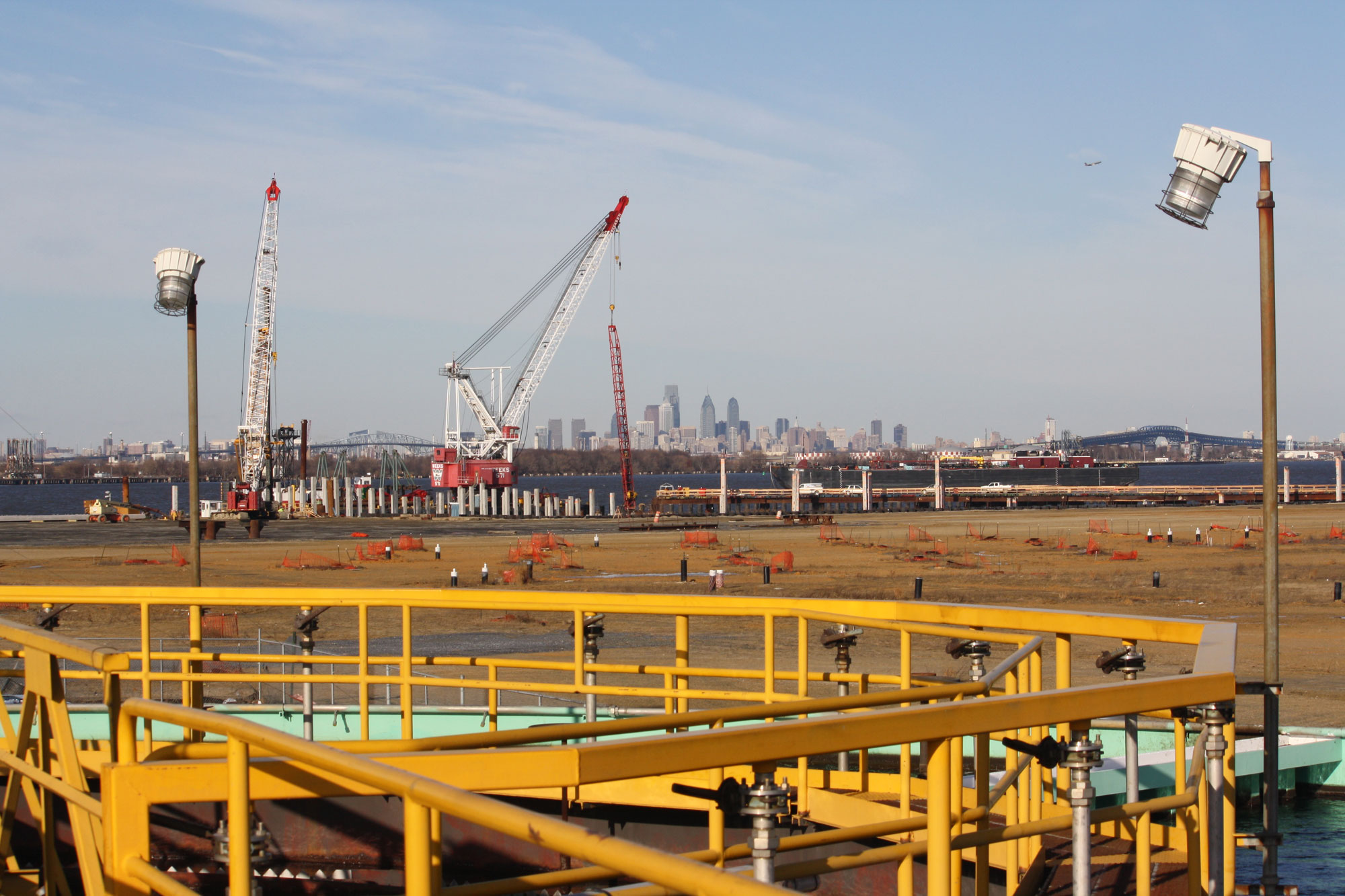
Working with the oversight of the New Jersey Department of Environmental Protection (NJDEP), BP completed a required site-wide preliminary environmental assessment to identify all potential areas of concern (AOCs).
Remediation system expansions included the addition of two new groundwater extraction wells and expansion of the product recovery system well network. New wells were added to the soil vapor extraction systems, and air sparging was initiated.
BP conducted excavation and removal of impacted soils from several areas of the Site.
Environmental cleanup and Port site development continued in simultaneous coordinated effort. GCIA completed filling and grading in several areas, including those where BP had conducted soil remediation in 2010.
GCIA also initiated installation of a new storm water drainage and sewer system for the Port, constructed new marine dock infrastructure, and initiated river dredging for future ship access to the Port.
Concurrently, BP installed over 160 new remediation wells and started the installation of underground piping to connect the wells to new and existing remediation equipment.
BP also enrolled in the NJDEP's Licensed Site Remediation Professional (LSRP) program.
BP implemented injection of nutrients to enhance natural biological cleanup processes.
Port infrastructure construction continued, including a bridge over Mantua Creek to better link the port to Interstate 295.
BP implemented injection of chemical oxidants to supplement the primary cleanup actions in the Remediation Management Unit (RMU) 1C area.
BP completed major overhaul of key components of the Groundwater Treatment Plant.
Port infrastructure construction continues.